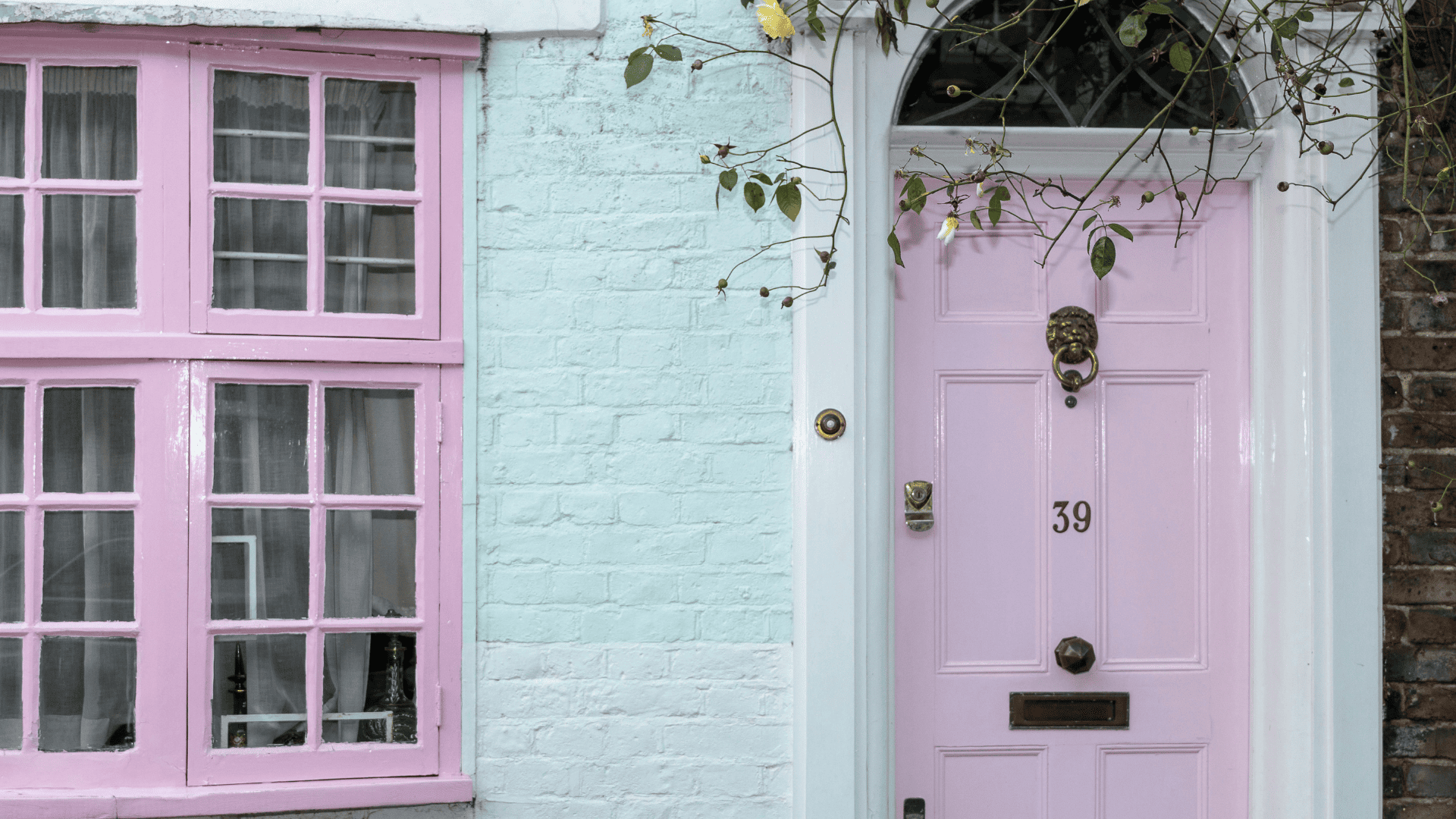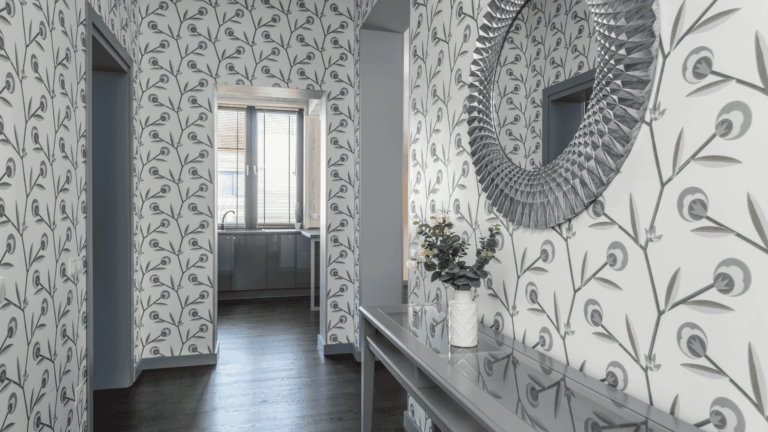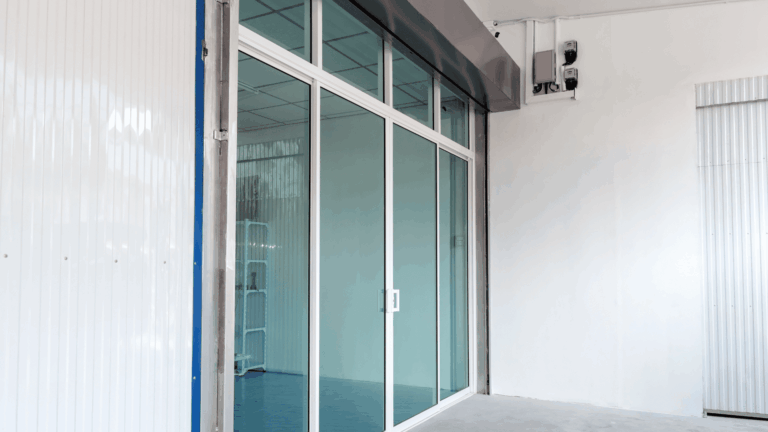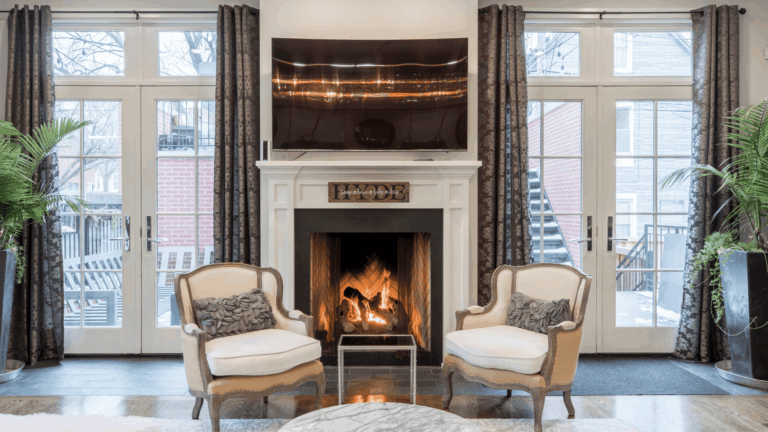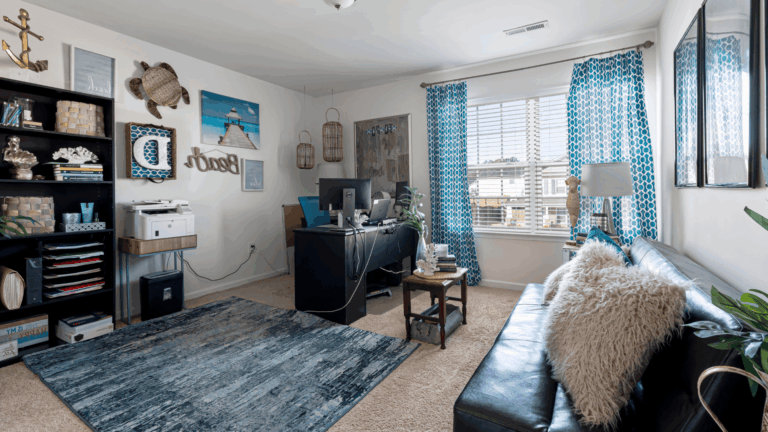Top 10 Front Door Paint Colors That Boost Curb Appeal & Style
Top 10 front door paint colors that instantly boost curb appeal and style. Discover timeless, trendy, and mood-enhancing options for every home style.
Why Your Front Door Color Matters
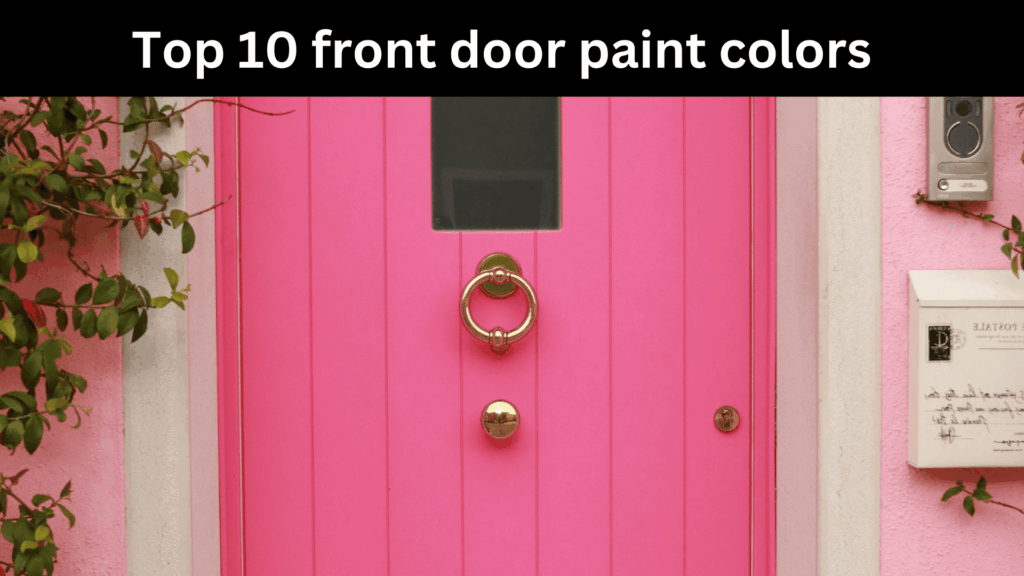
Your front door is more than just an entryway—it’s a handshake, a greeting, and a style statement rolled into one. Choosing the right front door color can transform the overall appearance of your home, increase curb appeal, and even influence how visitors feel when they arrive.
Colors aren’t just visual decoration—they carry emotional weight. A bold red can communicate energy and passion, while a deep navy suggests trust and calm. Whether you’re prepping your home for sale or just refreshing its look, your front door color sets the tone for what’s inside.
And here’s the kicker: the right color choice can even add to your property’s value. A recent real estate trend study suggests that certain front door shades make buyers more likely to book a showing—and pay more. So, picking the perfect hue isn’t just about beauty, it’s about strategy.
Factors to Consider Before Choosing a Front Door Color
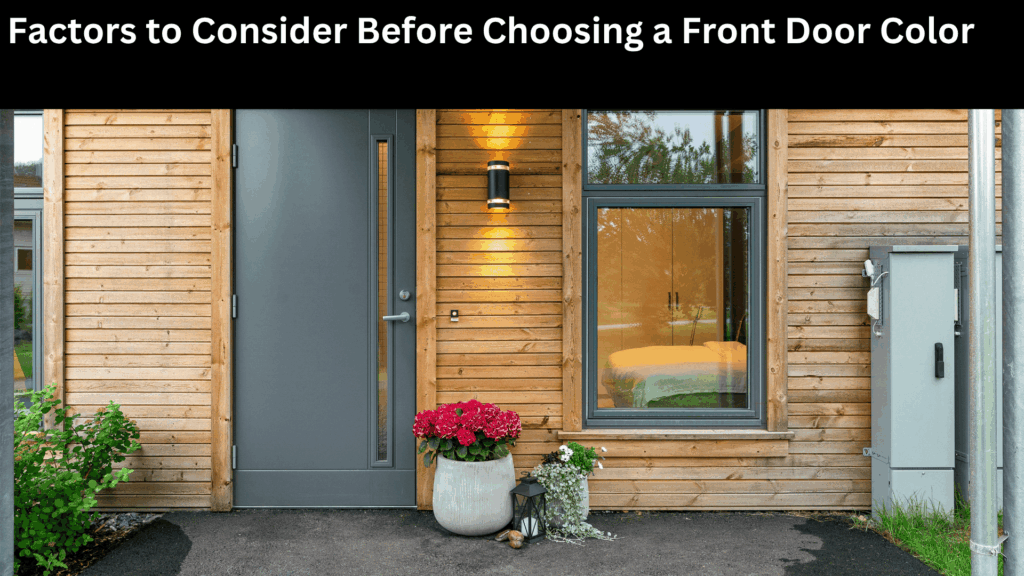
Picking a front door color isn’t just about grabbing the shade you like most—it’s about choosing a color that enhances your home’s appearance, stands up to environmental conditions, and aligns with your personal style. Here are the key considerations before making your choice:
1. Architectural Style and Compatibility
Your home’s design is your first clue to a suitable color palette.
- Traditional homes like Colonial or Victorian styles often shine with rich, deep colors—think navy blue, burgundy, or hunter green.
- Modern and minimalist homes tend to favor bold contrasts or sleek monochromatic tones like black, charcoal, or white.
- Cottage or rustic homes look beautiful with earthy or nature-inspired colors, such as sage green, warm brown, or muted yellow.
Matching the architectural style helps ensure the door feels like part of the home’s story rather than an afterthought.
2. Neighborhood and HOA Guidelines
Before you fall in love with a vibrant orange or electric blue, check local restrictions.
- Homeowners’ associations (HOAs) may have rules about permissible exterior colors to maintain neighborhood uniformity.
- Even if there’s no HOA, consider the surrounding homes. Choosing a wildly different color could make your home stand out in the wrong way—or exactly the right way, depending on your intent.
3. Climate, Weather, and Sunlight Exposure
The environment you live in affects how your paint will age.
- Sun-drenched areas: Intense sunlight can cause colors to fade faster. Opt for UV-resistant paints and avoid overly dark colors if fading is a concern.
- Humid or coastal climates: Salt air and moisture can cause quicker wear. Look for weather-resistant finishes.
- Cold climates: Some colors may show dirt, snow marks, or salt stains more easily, so maintenance plays a role.
4. Matching vs. Contrasting with Exterior Elements
A front door color can either blend with or pop against your home’s exterior.
- Matching: Creates a seamless, understated look—ideal if you want your landscaping or windows to be the focus.
- Contrasting: Makes the door a statement piece. For example, a bright red door against white siding creates an instant focal point.
Tip: Pull accent colors from your roof tiles, shutters, or trim to keep everything cohesive.
5. Paint Finish: Gloss, Semi-Gloss, or Matt.
The finish you choose impacts both appearance and durability.
- Gloss & Semi-Gloss: The most popular for front doors, as they resist moisture, are easier to clean, and enhance architectural details with a subtle shine.
- Matte: Offers a softer, modern look but may be more prone to scuffs and dirt.
- Satin: A middle ground with a smooth finish and decent durability.
6. Color Psychology and Mood
Don’t overlook the emotional effect of your front door color.
- Warm colors like red, yellow, and orange project warmth and energy.
- Cool colors like blue, green, and teal create calm and relaxation.
- Neutrals like black, white, and gray communicate sophistication and timelessness.
A door’s color sets the tone for how people feel when they enter your home, so choose a shade that matches the mood you want to create.
Top 10 Front Door Paint Colors for Every Home Style
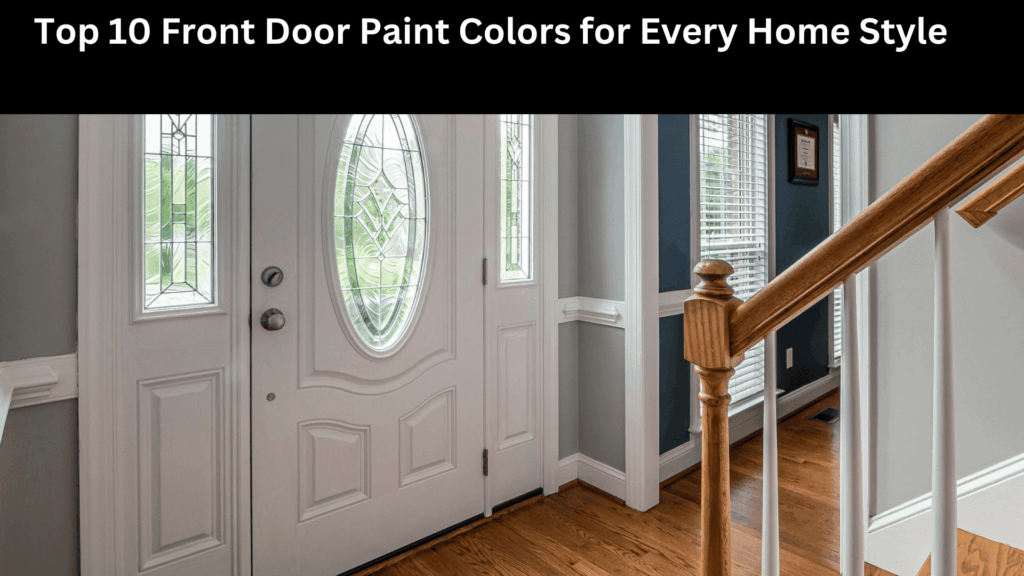
Your front door is more than just an entrance—it’s a statement piece. The right color can capture attention, complement your home’s architecture, and create an emotional response before visitors even step inside. Below are ten colors that consistently stand out for their beauty, versatility, and timeless appeal.
1. Classic Black – Timeless Sophistication
Black front doors radiate elegance and authority. They work beautifully with both traditional and modern homes, creating a sharp contrast against white or light siding.
- Best for: Colonial, Georgian, and modern minimalist styles.
- Pair with: Crisp white trim, metallic handles, or brass knockers for a luxury touch.
- Bonus: Hides dirt and fingerprints better than lighter shades.
2. Bold Red – Energetic and Inviting
Red doors are eye-catching and steeped in tradition—symbolizing welcome, prosperity, and luck in various cultures. A glossy red door can instantly liven up a neutral façade.
- Best for: Farmhouses, traditional homes, and urban townhouses.
- Pair with: White or black trim for maximum visual punch.
- Tip: Choose a deeper, muted red for elegance, or bright red for vibrancy.
3. Navy Blue – Nautical Charm and Class
Navy balances boldness and sophistication, offering a calm, confident vibe. It’s especially stunning with coastal or classic-style homes.
- Best for: Cape Cod, beach houses, and colonial exteriors.
- Pair with: White trim, light gray siding, or brick.
- Extra touch: Add polished chrome hardware for a crisp, maritime feel.
4. Forest Green – Natural and Calming
A dark, earthy green creates harmony with nature and blends seamlessly with gardens or wooded landscapes.
- Best for: Cottage, craftsman, and rustic homes.
- Pair with: Cream or tan siding, stone walls, or wooden trim.
- Tip: Works especially well for homes in lush, leafy neighborhoods.
5. Sunny Yellow – Cheerful and Welcoming
Yellow is the color of optimism and joy, and a yellow front door radiates warmth. Muted buttery shades feel sophisticated, while bright lemon shades feel fun and playful.
- Best for: Cottages, bungalows, and eclectic homes.
- Pair with: White trim and gray or blue siding for a balanced look.
- Note: Best in moderate doses—avoid overwhelming with other bright accents.
6. Charcoal Gray – Modern and Versatile
Charcoal is a softer alternative to black, bringing sleek sophistication without the stark contrast. It’s an ideal choice for those wanting elegance with a modern twist.
- Best for: Contemporary, industrial, and transitional homes.
- Pair with: Stone, brick, or muted pastel siding.
- Tip: Use satin or semi-gloss finish to prevent the color from looking flat.
7. Turquoise – Playful Coastal Vibes
Turquoise injects freshness and personality into a home’s exterior. Its vibrant yet soothing quality makes it perfect for beachy or tropical themes.
- Best for: Coastal cottages, vacation homes, and artistic spaces.
- Pair with: White, sandy beige, or coral accents.
- Extra tip: Keep surrounding colors neutral to let turquoise shine.
8. Deep Burgundy – Rich and Luxurious
Burgundy is a regal, dramatic choice that exudes depth and warmth. It’s particularly appealing in autumn and pairs beautifully with natural materials.
- Best for: Historic, Tudor, or French country homes.
- Pair with: Cream or stone exteriors, dark wood accents.
- Bonus: Holds its depth well in various lighting conditions.
9. White – Clean, Crisp, and Classic
A white front door offers pure simplicity and timeless charm. It brightens dark façades and creates a fresh, welcoming atmosphere.
- Best for: Any home style, from farmhouse to modern.
- Pair with: Dark siding for contrast or light siding for a monochromatic look.
- Tip: Opt for a durable, washable paint to keep white looking pristine.
10. Teal – Bold Yet Balanced
Teal strikes a balance between the tranquility of blue and the energy of green, making it both bold and approachable.
- Best for: Mid-century modern, artistic, and bohemian homes.
- Pair with: Warm wood tones, cream trim, or soft gray siding.
- Extra touch: Bronze or matte black hardware enhances teal’s vibrancy.
How to Test and Finalize Your Front Door Paint Color
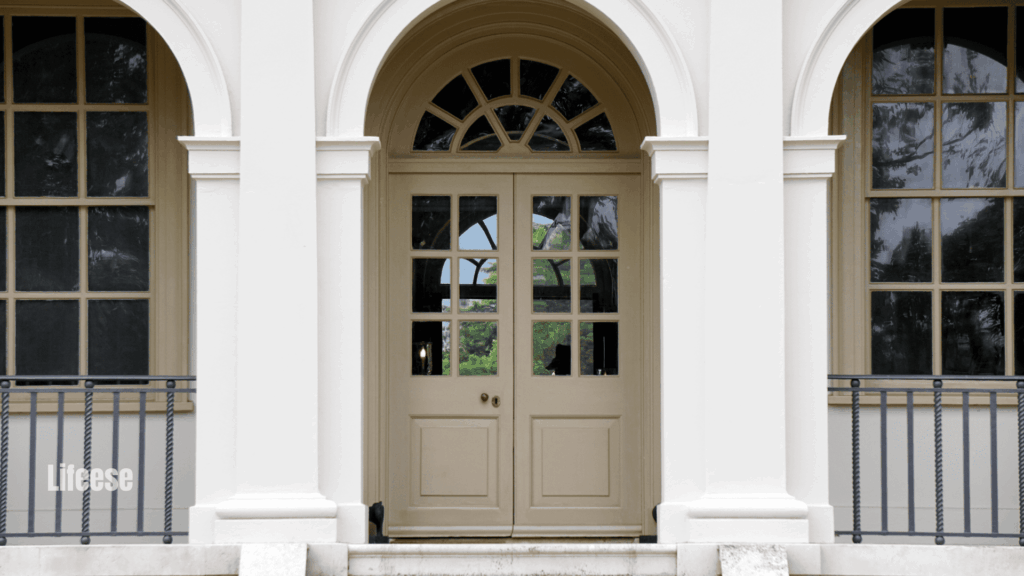
Choosing a paint color from a sample card is risky—colors often look very different once applied to a large surface and exposed to natural light. Testing before committing ensures you pick a shade that looks just as good on your door as it does in your imagination.
1. Start with a Shortlist of Colors
After considering your home’s style, surroundings, and mood goals, narrow down to 3–5 colors you’re seriously considering. This helps avoid decision fatigue and keeps you focused.
Tip: Look at online inspiration galleries from paint brands or design blogs to see real-life examples of similar home styles with the colors you’re considering.
2. Get Paint Samples or Swatches
Most hardware and paint stores offer small sample pots or peel-and-stick swatches.
- Sample pots let you paint directly on your door or on a foam board.
- Peel-and-stick swatches are convenient because they don’t require cleanup and can be repositioned.
Why it matters: Paints can dry slightly darker or lighter than they appear on the card, so seeing the true finish is crucial.
3. Test in Multiple Lighting Conditions
Light changes everything. A color that looks rich in morning sunlight might seem muted at night.
- Morning: Reveals cooler undertones.
- Afternoon: Shows the truest, most balanced shade.
- Evening: Warmer indoor light may alter the tone.
Check your samples at different times of the day for at least a couple of days before deciding.
4. Evaluate with Surrounding Elements
Step back and see how the color interacts with your siding, trim, roof, and landscaping.
- Matching approach: Creates a harmonious, seamless look.
- Contrasting approach: Makes the door pop and act as a focal point.
Remember—what works on a neighbor’s house may not work on yours if your surrounding elements differ.
5. Use Digital Visualization Tools
Many paint companies, like Sherwin-Williams and Benjamin Moore, offer free online tools where you can upload a photo of your home and “paint” the front door virtually.
- Pros: Quick, mess-free, and great for comparing multiple colors.
- Cons: Digital colors may not perfectly match real-life tones, so still test physically before finalizing.
6. Commit and Prepare for Painting
Once you’ve seen your options in different lights and contexts, trust your instincts and commit to your choice.
- Choose a high-quality exterior paint for durability.
- Select a finish (semi-gloss is most popular for doors).
- Prep your door surface properly before painting to ensure a smooth, long-lasting result.
Front Door Color Trends for the Upcoming Year
If you want to stay ahead of the curve, here’s what’s trending:
- Emerging Bold Palettes: Expect more jewel tones like emerald and sapphire.
- Nature-Inspired Tones: Olive greens, warm terracottas, and sandy neutrals are gaining popularity.
- Eco-Friendly Paint Choices: Low-VOC and sustainable paints are in demand for environmentally conscious homeowners.
Maintenance Tips for Keeping Your Front Door Vibrant
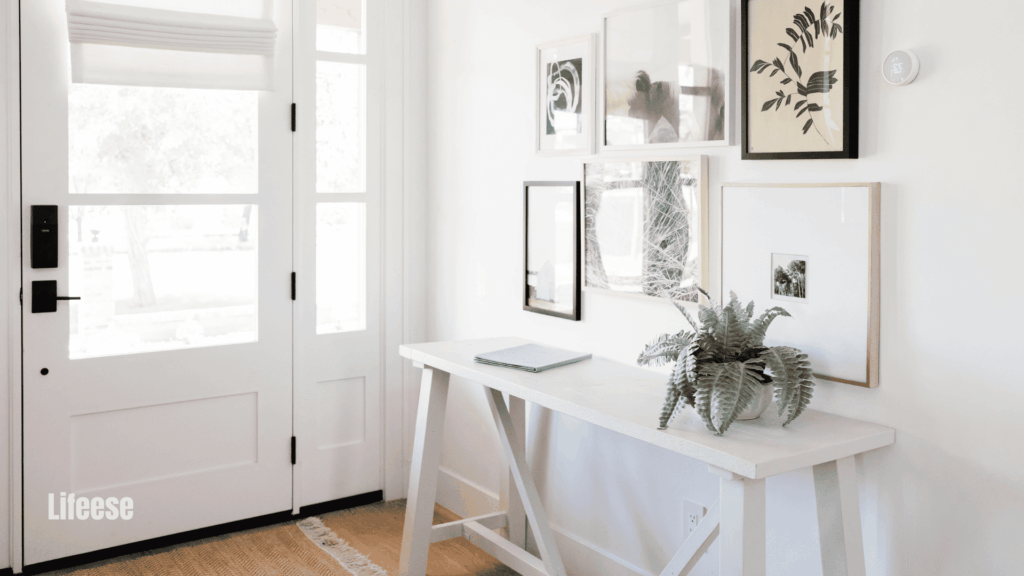
A freshly painted front door can instantly boost your home’s curb appeal, but keeping it looking fresh and vibrant requires a little upkeep. Here are practical tips to ensure your door maintains its charm for years to come.
1. Clean Regularly
- Frequency: At least once a month.
- Method: Use a soft sponge or microfiber cloth with mild soap and warm water. Avoid abrasive cleaners that can strip the finish.
- Tip: Rinse thoroughly and dry with a soft towel to prevent water spots.
2. Protect Against Sun Damage
- Prolonged exposure to sunlight can cause fading.
- Apply a UV-protective clear coat every 1–2 years to maintain vibrancy.
- If possible, add an overhang, porch covering, or even a decorative awning to reduce direct exposure.
3. Inspect for Chips and Peeling
- Check quarterly for any peeling, blistering, or chipping paint.
- Quick fix: Lightly sand the damaged area and apply matching touch-up paint before the problem spreads.
4. Reapply a Protective Finish
- Even the best paints benefit from an additional top coat of exterior-grade polyurethane or marine varnish.
- This adds a water-resistant barrier and prevents moisture infiltration.
5. Lubricate Hinges and Hardware
- While not directly about color, rusty hardware can stain the paint.
- Use a silicone-based lubricant every six months to keep hinges smooth and rust-free.
6. Avoid Harsh Conditions
- If you’re doing exterior cleaning, avoid pressure washing the door—it can strip paint.
- During repainting or touch-ups, pick a mild day (not too hot, cold, or humid) to ensure the paint cures properly.
7. Seasonal Care
- Spring/Summer: Check for fading or blistering from heat.
- Fall/Winter: Watch for moisture damage, especially in humid or snowy climates.
8. Consider a Storm Door
- Adding a storm door can protect your painted door from rain, wind, and debris while still allowing visibility.
FAQs about Choosing the Best Front Door Color
What front door color increases home value the most?
Studies suggest black and deep charcoal are most appealing to buyers.
Should the door color match the shutters?
Not necessarily—it should complement them, not necessarily match exactly.
Which colors are best for small entryways?
Light or bright colors help create an open, airy feel.
How often should I repaint my front door?
Every 3–5 years, depending on exposure and paint quality.
Can I paint my door without removing it?
Yes, just tape around hardware and edges carefully.
What is the most popular front door color right now?
Navy blue and classic black remain top favorites.
Conclusion: Making Your Front Door a Statement Piece
Your front door is the ultimate welcome sign. With the right color choice, it becomes more than just an entrance—it becomes a focal point that reflects your personality and enhances your home’s charm. Whether you go for bold red, timeless black, or refreshing teal, the right shade can transform your curb appeal instantly.
